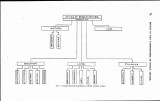| OCR Text |
Show 4 BEPOBT OF THE COMMISSIONEB OF INDIAN AFFAIRS. 6. The establishment of a traveling health exhibit, especially with reference to proper methods of combating tubercular diseases. 7. A systematic teaching in the schoolroom of physical develop-ment and care of the health of each individual pupil. 8. The distribution of a pamphlet on the disease of tuberculosis, its prevention and cure. 9. The establishment of camps for tuberculosis patients. 10. More sanitary homes for Indians, especially with reference to ventilation. EMPLOYMENT OF INDIANS. Indians are given the preference of appointment to all positions in the Indian Service whch they are competent to fill. Graduates of the larger Indian schools are not infrequently, on successful noncom-petitive examinations for various positions, such as teachgr, clerk, seamstress, farmer, etc., given suitable appointments. Some have risen to be superintendents and have been successful. Many of those in subordinate positions have gained for themselves the commenda-tion of their superior officers; others have merited and received pro-motion. The majority of minor positions at schools and agencies are excepted from examination and many are iUed by Indians. It is while serving in such capacities that some of the Indians acquire the experience and skill which fit them for more responsible places. Of the 5,091 employees of the Indian Service 1,662 are Indians. HELP FROM INDIANS. Mr. Chas. E. Dagenett, a Peoria Indian, is a conspicuous example of an Indian who has proven equal to a task usually assigned to white employees. He is a great factor in the development of his own race and of invaluable mistance to the Government as supervisor of In-dian employment. His duty requires the finding of work for Indians and the finding of Indim for the work. He has been so successful that, beginning alone three years ago, it has been necessary to give him assistants located at different points in the Indian country. Under his intelligent supervision hundreds of Indians have been placed at work on railroads, irrigation ditches, in beet fields, and sundry employments for which their strength and abilities are equal. He is a type of Indian that the office is striving to developa self-supporting, self-respecting, useful American citiien. His lie is an example to his race, and I am happy to say many others are following it. Some, whose marked abilities have been hitherto employed not to the benefit of their fellows, will, I feel sure, sooner or later grasp the opportunity of rendering them assistance. The BlackFeet Indians in Montana, who had never been consid-ered good workers, were employed on an irrigation project on the |









































































































































































